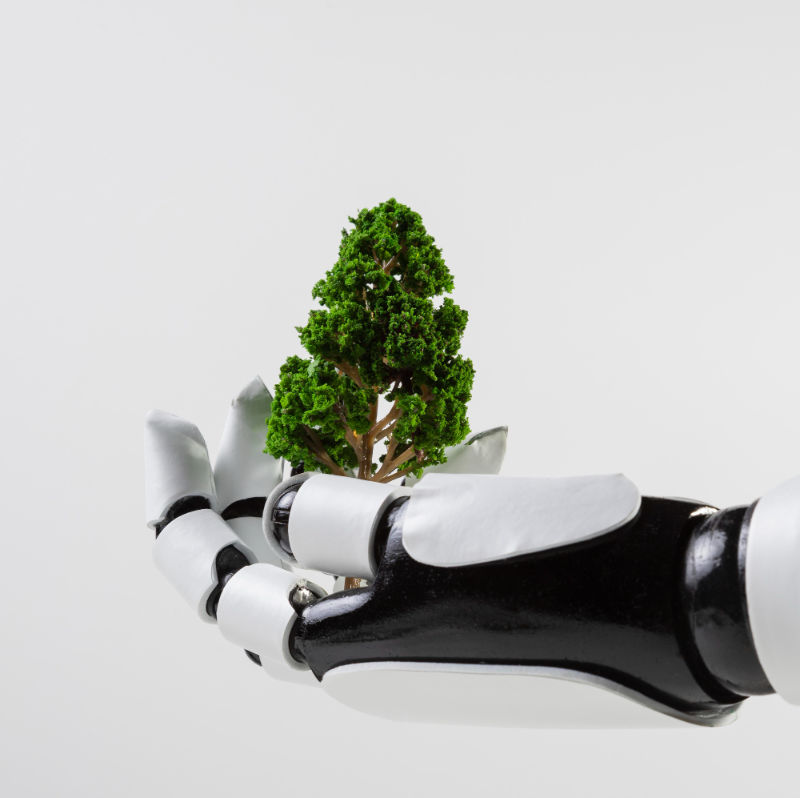Artificial intelligence (AI) has been making huge advances, offering incredible tools that can change the world. OpenAI’s new AI model, o3, shows just how powerful AI How AI’s Growing Power Affects the Environment. But what is aI’s environmental impact?
Artificial intelligence (AI) has revolutionized industries with groundbreaking tools and capabilities. OpenAI’s latest model, o3, showcases AI’s immense potential, but these advancements come with environmental challenges. The energy and resources AI consumes significantly impact the planet, raising the urgent question: How can AI balance its power with sustainability?
How Much Energy Does AI Use?
AI models demand enormous energy. For instance, one task on OpenAI’s o3 consumes 1,785 kWh—equal to two months of energy for an average U.S. household. This activity generates 684 kilograms of CO₂ emissions, akin to burning over five tanks of gasoline. Experts, like Boris Gamazaychikov from Salesforce, argue that these estimates might be conservative, excluding hardware production and maintenance costs.
Understanding AI’s Energy Demands
AI’s energy requirements are staggering, especially for large-scale servers. Nvidia H100 GPUs, widely used for AI tasks, draw 11–12 kW per server. According to green AI advocate Kasper Groes Albin Ludvigsen, this demand surges for complex, multi-step processes. AI researcher Pierre-Carl Langlais emphasizes how these repeated tasks intensify environmental strain.
AI’s Water Consumption: An Overlooked Issue
AI systems also consume water to cool massive data centers. Researchers estimate that a single ChatGPT session uses about 10% of an individual’s daily drinking water. Though seemingly small, this scales dramatically with millions of daily interactions. Kathy Baxter from Salesforce warns of Jevon’s Paradox—where gains in energy efficiency lead to higher resource usage elsewhere.
AI’s Role in Combating Climate Change
While AI poses environmental risks, it also offers solutions to tackle climate challenges. Organizations like the United Nations Environment Program leverage AI for:
- Climate Data Analysis: Predicting patterns and enhancing global strategies.
- Wildfire Detection: Identifying fires early with AI-enabled cameras.
- Energy Grid Optimization: Reducing emissions through smarter grids.
- Recycling Innovation: Streamlining waste sorting with AMP Robotics.
- Aviation Impact Reduction: Helping pilots minimize contrails, responsible for 35% of aviation’s warming effect.
Measuring AI’s Carbon Footprint
Quantifying AI’s carbon footprint is tricky, as companies often withhold specific data. Studies by Hugging Face and Carnegie Mellon reveal that creating a single AI-generated image consumes the same energy as charging a smartphone. Jesse Dodge from the Allen Institute for AI suggests reducing energy use by deploying models in cleaner energy grid regions and optimizing model size for tasks.
Greener AI Initiatives
Forward-thinking companies are exploring solutions to lessen AI’s environmental toll:
- Renewable Energy Data Centers: Transitioning to solar and wind power.
- Edge AI Development: Processing data locally to minimize energy use.
- Efficient Cooling: Adopting innovative methods to reduce water and energy needs.
10 Ways to Build Sustainable AI
- Increase Transparency: Publicly share energy and resource usage data.
- Adopt Renewable Energy: Power data centers with clean energy sources.
- Invest in Localized Processing: Shift toward edge AI for energy efficiency.
- Improve Hardware Recycling: Reuse and recycle outdated components.
- Optimize Models: Focus on smaller, task-specific AI models.
- Innovative Cooling Solutions: Reduce water waste through advanced cooling systems.
- Regulatory Support: Push for policies that encourage sustainable practices.
- Cross-Industry Collaboration: Share insights and practices for green innovation.
- Incorporate Off-Peak Operations: Schedule AI tasks during low-demand periods.
- Educate Stakeholders: Promote awareness about AI’s environmental impact.
Resources for Learning More
- Understanding AI’s Carbon Footprint
- AI and Climate Change: CBS News
- The Hidden Carbon Cost of AI
- Energy Use and AI: A Detailed Analysis
- Green AI: The Path to Sustainable Innovation
Final Thoughts: Balancing Innovation with Responsibility
AI offers unparalleled opportunities to reshape industries and combat climate change. However, the environmental costs demand immediate attention. By combining transparency, sustainable practices, and collaborative efforts, we can ensure that AI remains an ally for both humanity and the planet. Together, we can harness AI’s power responsibly, paving the way for a greener, more sustainable future.


